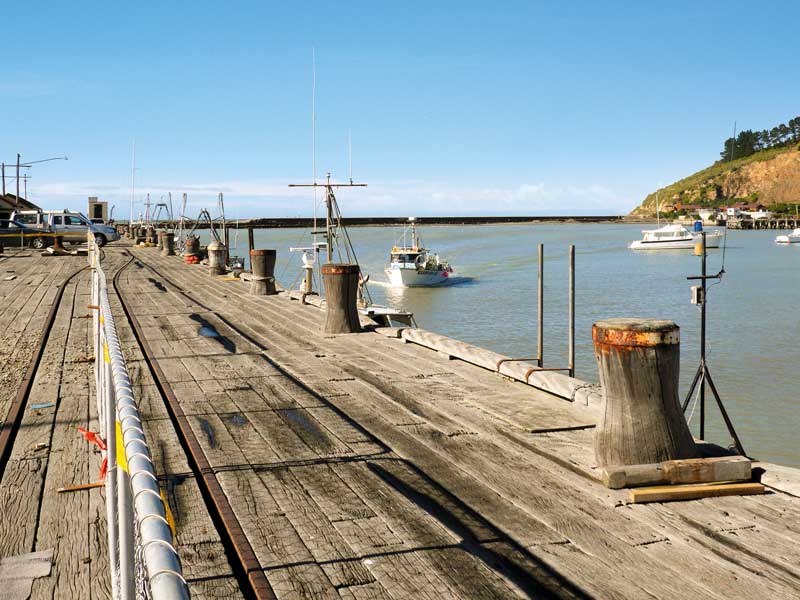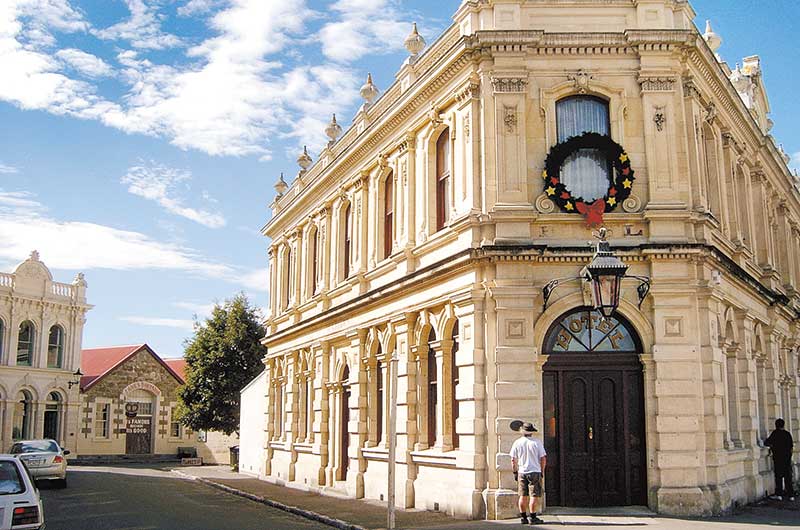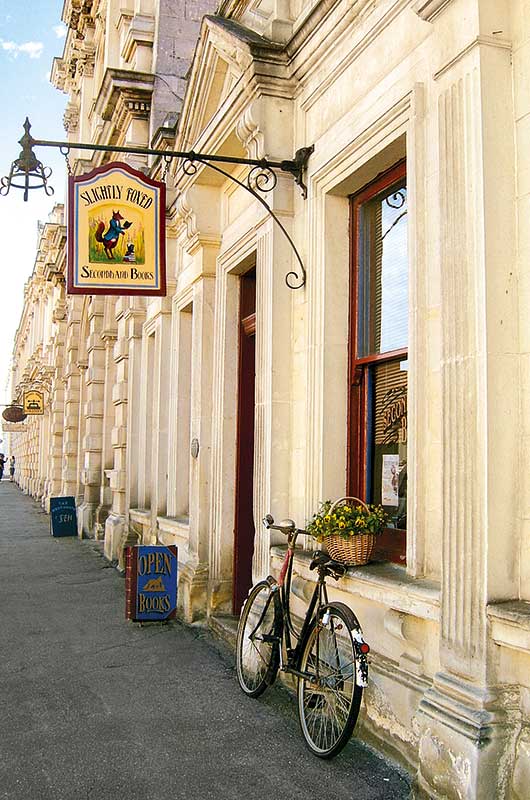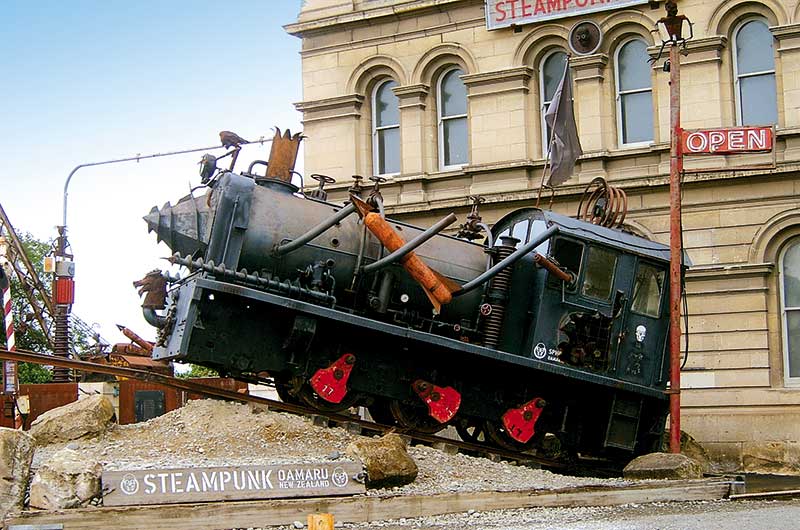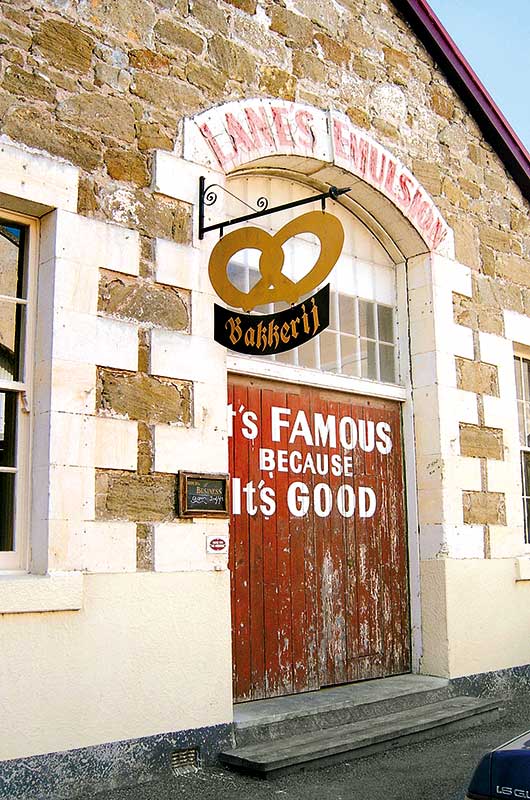Oamaru is an area steeped in history of one sort or another. In predominance throughout the district is the white Oamaru limestone used to build many of the grand old buildings. Just south of Oamaru on SH1 we came across the limestone buildings of Totara Estate. Restored by the former Historic Places Trust, these historic farm buildings are important not only because of their age, but because it was here that New Zealand’s frozen meat industry was pioneered.
It is hard to imagine but, before lamb was frozen for export, wool was the only sheep product that could be used. The sheep carcasses were dumped as waste. And it was a waste, one that appalled William Davidson, manager of the local runs of the New Zealand and Australian Land Company. In the early 1880s a slaughterhouse was added to the 20-year-old farm buildings on the Totara Estate, where around 400 sheep could be dispatched each day. To facilitate this, the sailing ship Dunedin had been fitted with a freezing plant and these early entrepreneurs saw the potential of frozen meat as an export. The first shipload left for London in 1882, arriving in perfect condition and thus starting one of the country’s major export industries.
We learnt all this and more as we explored the farm buildings which include stables, granary, workshop and the men’s accommodation block. On certain days visitors to Totara Estate can enjoy ‘billy tea’ with a group of swaggers from the past including ‘Shiner’ Slattery and ‘Whiterats’ Winters, though unfortunately we didn’t get chance to yarn with these characters on our visit.
Back in Oamaru itself, we wandered along the old wharf. Once a scene of bustling activity as meat, dairy products and other exports were loaded onto ships, now it is a quiet place for an evening stroll, home to just a few fishing boats.
Oamaru’s Thames Street is a gem of Victorian architecture, full of listed buildings. The town flourished from the 1880s after the frozen meat trade took off and the magnificent buildings give visitors an idea of what the Victorian town would have looked like.
The Waitaki District Council building was formerly the post office, built in 1883. The Bank of New South Wales, second of the two iconic bank buildings (sometimes called the temples from Athens), was built in the same year. Its neighbour, now the National Bank, was built in 1871. Across the road is the magnificent Opera House built in 1907 and restored in 2010.
On the corner is the Criterion Hotel built in 1877 when it was the known to be the best hotel in town – it had baths! The Criterion became the ‘pub with no beer’ in 1906 when the sale of alcohol was banned in Oamaru. Luckily alcohol is flowing at the Criterion again and it has had been returned to its former glory by the Oamaru Whitestone Civic Trust.
The Criterion is at the edge of the Historic Precinct, an area of town where you could be forgiven for thinking you had slipped through a time warp. Here the streets are lined with shops, bakeries, a wine bar, cafes, a wool-store complex and much more. These elegant Victorian buildings are brought to life by the people who own and staff them and who often dress up in period costume. Expect to see penny-farthing bicycles propped outside the bike shop.
Oamaru is New Zealand’s steampunk headquarters and visitors from the rest of New Zealand come to discover what it is all about or to attend the annual Steampunk NZ Festival. This event showcases steampunk fashions, jewellery, literature, art and music.
For something completely different we took a stroll around Oamaru’s peaceful Public Gardens. Established in 1876, the gardens feature expanses of lawns, rose gardens, a Chinese garden; a rhododendron dell, and much more.

The road to Milford Sound
Explore the awe-inspiring journey to Milford Sound through Fiordland National Park – from scenic DOC campsites and iconic hikes to wildlife cruises and luxury stays

